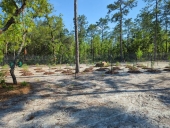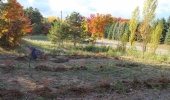posted 1 year ago
Except in the densest shade, you might try sweet potatoes as a ground cover. If you mulch around them with cardboard and woodchips or something like that, most of the potatoes will form right under the initial plant, otherwise the vines will root down in wet weather and they will form everywhere. If you can work the fertility up to a good level and push them with urine etc. you could try white potatoes early in the spring and harvest by midsummer and so have root staples for much of the year. The problems with sand are water and nutrients, but some of the root vegetables like these actually prefer it, clay is too tight and soggy for them and they are often a struggle and people have to make fluffy raised beds for them. Carrots might be worth a try in fall or early spring too. There are design advantages to growing vegetables and other annuals in a young orchard situation....you are stacking the space, using more of the sunlight, and the young trees will benefit from the additional attention, water, fencing, etc. mostly directed at the annuals.







